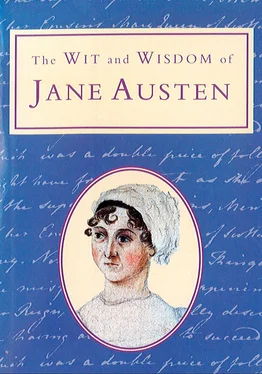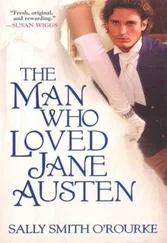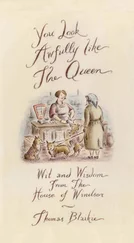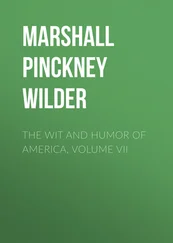The WIT and WISDOM of
JANE AUSTEN
edited by Michael Kerrigan
Copyright Copyright Introduction Works of Jane Austen Love and Friendship Marriage Men and Women Youth and Age Home and Family Society A Lady’s Accomplishments Some Characters Observed Human Nature The Written Word About the Publisher
First published in Great Britain in 1996 by Fourth Estate.
An imprint of HarperCollins Publishers 1 London Bridge Street London SE1 9GF
www.harpercollins.co.uk
Introduction and this selection copyright © 1996 by Michael Kerrigan
The right of Michael Kerrigan to be identified as the author of this work has been asserted by him in accordance with the Copyright, Designs and Patents Act 1988.
A catalogue record for this book is available from the British Library.
All rights reserved under International and Pan-American Copyright Conventions. By payment of the required fees, you have been granted the non-exclusive, nontransferable right to access and read the text of this e-book on-screen. No part of this text may be reproduced, transmitted, down-loaded, decompiled, reverse engineered, or stored in or introduced into any information storage and retrieval system, in any form or by any means, whether electronic or mechanical, now known or hereinafter invented, without the express written permission of HarperCollins e-books.
HarperCollins Publishers has made every reasonable effort to ensure that any picture content and written content in this ebook has been included or removed in accordance with the contractual and technological constraints in operation at the time of publication.
Source ISBN: 9781857026016
Ebook Edition © FEBRUARY 2016 ISBN: 9780007476848
Version: 2016-01-12
Cover
Title Page The WIT and WISDOM of JANE AUSTEN edited by Michael Kerrigan
Copyright Copyright Copyright Introduction Works of Jane Austen Love and Friendship Marriage Men and Women Youth and Age Home and Family Society A Lady’s Accomplishments Some Characters Observed Human Nature The Written Word About the Publisher First published in Great Britain in 1996 by Fourth Estate. An imprint of HarperCollins Publishers 1 London Bridge Street London SE1 9GF www.harpercollins.co.uk Introduction and this selection copyright © 1996 by Michael Kerrigan The right of Michael Kerrigan to be identified as the author of this work has been asserted by him in accordance with the Copyright, Designs and Patents Act 1988. A catalogue record for this book is available from the British Library. All rights reserved under International and Pan-American Copyright Conventions. By payment of the required fees, you have been granted the non-exclusive, nontransferable right to access and read the text of this e-book on-screen. No part of this text may be reproduced, transmitted, down-loaded, decompiled, reverse engineered, or stored in or introduced into any information storage and retrieval system, in any form or by any means, whether electronic or mechanical, now known or hereinafter invented, without the express written permission of HarperCollins e-books. HarperCollins Publishers has made every reasonable effort to ensure that any picture content and written content in this ebook has been included or removed in accordance with the contractual and technological constraints in operation at the time of publication. Source ISBN: 9781857026016 Ebook Edition © FEBRUARY 2016 ISBN: 9780007476848 Version: 2016-01-12
Introduction
Works of Jane Austen
Love and Friendship
Marriage
Men and Women
Youth and Age
Home and Family
Society
A Lady’s Accomplishments
Some Characters Observed
Human Nature
The Written Word
About the Publisher
Few great writers can have cut so unglamorous a figure in the world as Jane Austen did. Though her novels from the first proved popular with the reading public, among the Hampshire gentry with whom she lived and visited her abilities went unguessed at. As for her family, while treasuring her merry, irreverent conversation, they found other accomplishments more immediately praiseworthy. According to her nephew, J. Edward Austen-Leigh, who wrote a Memoir of his aunt in 1870, in his own old age, ‘Her needlework both plain and ornamental was excellent, and might almost have put a sewing machine to shame. She was considered especially great in satin stitch.’ Her younger relations, not surprisingly, were more alive to her sense of fun – ‘Her performance with cup and ball was marvellous’, records her nephew fondly – but they were no more able than their parents to imagine the miraculous talent that was coming to fruition in their midst as, working steadily away in the crowded parlour in the little family house at Chawton, between convivial family mealtimes, noisy games of ‘Spilikens’ and quiet sessions of reading and sewing, their aunt created the novels which would in time admit her to the company of England’s most revered writers – and as the most enduringly readable, lovable genius of them all. Even many decades after her death, when the fame of Jane Austen extended across the world, her Hampshire neighbours were the last to know. ‘A few years ago,’ recalls Austen-Leigh, ‘a gentleman visiting Winchester Cathedral desired to be shown Miss Austen’s grave. The verger, as he pointed it out, asked, “Pray, sir, can you tell me whether there was anything particular about that lady; so many people want to know where she was buried?” ’
As the sixth of seven children, Jane Austen was introduced early to the idea of her own insignificance. The Reverend George Austen had been given the neighbouring Hampshire parishes of Deane and Steventon to administer in 1764, the same year that he married Cassandra Leigh. The couple lived in Deane for the first few years, however, and it was not until 1771 that they moved, with their growing family, to the rectory at Steventon in which, in 1775, Jane would be born. By that time, her eldest brother, James, was over ten years old: he must have seemed like another adult to the young girl, kind but a little imposing; a cultivated young man of wide literary and intellectual interests, he did much to foster her early interest in books. Affable and lively as he was by temperament, her next-eldest brother, Edward, was a remote figure in a different way. By an arrangement of a sort not uncommon at the time, he had been adopted by a relation, Mr Knight, in order to relieve some of the Austen family’s financial pressures. Living with his adoptive father in comparative splendour, he would eventually inherit both his name and estate; he became close to Jane in adulthood, his daughter, Fanny, becoming perhaps her favourite niece. The nearest to an underachiever the family was to produce, Henry was nonetheless a witty and likeable young man: it was his lack of steadiness, rather than any shortage of ability, which prevented his making more of a mark in a career as clergyman to which he was characteristically slow in settling. Though three years older than Jane, Cassandra, the novelist’s only sister, was also to prove her lifelong friend and confidante – and the recipient of many of her most acerbic and entertaining letters. The two brothers closest to Jane in age would both rise successfully in the Navy: both Francis and Charles would attain the rank of admiral, the former finally being appointed Senior Admiral of the Fleet.
Yet if the presence of so many strong personalities taught Jane to know her place, it also guaranteed an unending flow of jokes and games. Overflowing as it was with bright, boisterous children, the rectory at Steventon was a house of hilarity: there was always an eager cast of actors for any dressing-up game or dramatic presentation, an affectionate, appreciative audience for any doggerel rhyme or skit. It was in just such a spirit of family fun that Jane Austen produced her first work of fiction: by the age of twelve she was already writing little stories and plays, by fourteen she had written the short novel,
Читать дальше












